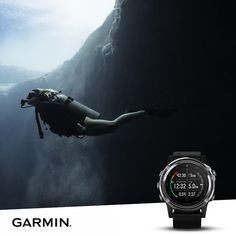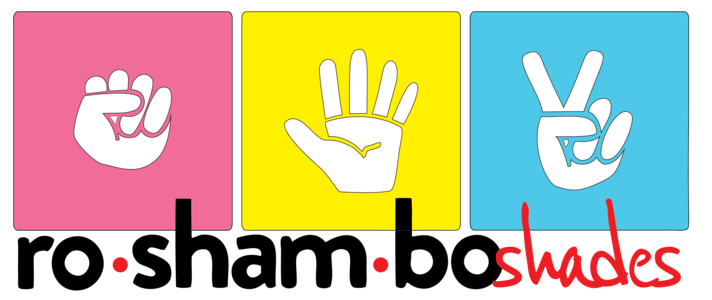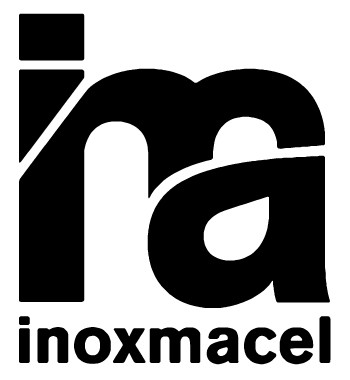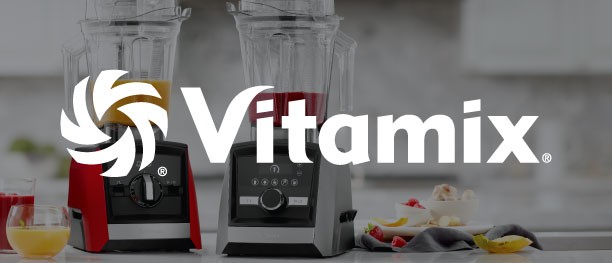How to Self-Administer EMDR Therapy at Home
By Jordan Smith, MSc Psychology & Emma Lee, Clinical Therapist | Updated May 2025

Understanding Self-Administered EMDR
Eye Movement Desensitization and Reprocessing (EMDR) is a powerful therapeutic approach developed to reduce or eliminate the distress linked to traumatic memories. Unlike traditional talk therapy, EMDR involves the individual recalling traumatic events while engaging in bilateral stimulation—most commonly eye movements that alternate from side to side. This process helps the brain reprocess and integrate traumatic memories more adaptively.
Typically, EMDR is conducted by trained therapists who guide the client through a structured protocol. However, with the right knowledge and tools, it is possible to safely practice EMDR techniques at home. While professional guidance is highly recommended, self-administered EMDR can be a useful option, especially when access to therapy is limited.
The Pros And Cons Of Self-Administered EMDR
A small 2013 study by Spence, Titov, and Johnson et.al evaluated the effects of self-administered EMDR. They found significant improvements in subjects who self-administered after three months in spite of inconsistencies in methodology. Though none of the participants reported serious adverse effects, some patients did have an increase in traumatic re-experiencing following treatment. A few reported an overall worsening of symptoms but this improved by the time of follow-up. Nine out of the 11 participants who completed post-treatment questionnaires said they would recommend the course to a friend.
Experienced EMDR practitioner Dr. James Alexander had this to say about self-administered EMDR:
“Yes, it can be self-administered (as can EFT)- but, not advisable when dealing with anything other than very small t traumas (and the distinction between them and Big T traumas can disappear quickly once you get into them- we are often surprised by how much charge even small traumas can entail). Overall, I’d suggest that we are not really ‘meant’ to try and address trauma on our own. So, I’d recommend getting over any reserve and working with a skilled therapist. And keep in mind, there is no necessity for big cathartic responses to EMDR- some people will demonstrate this, others won’t, and there is no difference in the outcomes.
People have differing levels of comfort with emotional expression- EMDR is not trying to force any particular mode, just allowing people to respond in a way they feel comfortable with.
Good EMDR happens in the context of a good therapeutic relationship- in which there is mutual trust built up over a period of time. That will generally allow people to freedom to respond in a manner which is natural to them.”
Even if you choose to attempt self-administered EMDR, it is recommended that you meet with a certified EMDR therapist first. It is also important to understand that administering EMDR without fully understanding the process can be inefficient and result in partial, minimal, or no trauma resolution. In some cases those who practice EMDR alone retraumatize themselves by stirring up old traumas that they are not equipped to handle. With these words of caution in mind, self-administered EMDR can be of great benefit to those who thoroughly understand the technique and trust themselves to handle whatever may surface during the process. Furthermore, many would argue that it is better to try to treat yourself than continue to suffer.
Scenarios in which self-administered EMDR may be appropriate include:
- Lack of access to an EMDR therapist
- Inability to afford formal treatment
- Old traumas are triggered by life events and you are unable to access mental health services quickly
- Any life event that causes acute symptoms such high anxiety or a “fight or flight” response from which you are seeking immediate relief
Whether or not you choose to practice self-administered EMDR is a personal choice. It is ultimately up to your judgement and intuition if self-administered EMDR is right for you.
Understanding EMDR In Its Entirety
If you choose to self-administer EMDR, it is wise to study the complete technique first and familiarize yourself with all of the phases of treatment. EMDR has evolved into a structured 8 stage process with distinct phases that go well beyond the eye movements alone.
The following is an outline of the eight step EMDR process when conducted by a trained practitioner:
- Client History- target memories are identified
- Preparation- client is prepared for the process
- Assessment- client’s memories, feelings, beliefs, etc. are fully assessed
- Desensitization- memories are processed using eye movements or other forms of bilateral stimulation
- Installation- negative beliefs associated with memories are replaced with positive ones
- Body Scan- client undergoes another round of bilateral stimulation to eliminate any lingering physiological symptoms
- Closure- ensure client is returned to a state of balance at the end of session
- Re-evaluation- check that distressing memory has been fully processed
See also our detailed article on the EMDR process for a full breakdown of each step in more detail.
While using EMDR it is vital to understand that bilateral stimulation is only part of the process. It is very important to include the installation stage if you are performing self-administered EMDR. This means identifying self-defeating and dysfuntional beliefs such as, “I’m worthless”, or “I can’t do anything”, and consciously replacing them with more adaptive thoughts like, “I can take charge of my life,” and “I’m not powerless anymore”. This is performed after traumas have been processed with bilateral stimulation. Practicing self-awareness and paying attention to your thought process will increase insight into habitual thought patterns.
Below are a few videos from EMDR founder Francine Shapiro and EMDR therapist James Alexander that provide in depth explanations of how the technique works:





 EMDR
Webinar Francine ShapiroEMDR Explained Part 1EMDR Explained Part 2
EMDR
Webinar Francine ShapiroEMDR Explained Part 1EMDR Explained Part 2
DIY EMDR
There are many online resources on sites such as YouTube that facilitate self-administered EMDR. Numerous videos utilize bilateral stimulation that mimics the movements EMDR therapists typically make with their fingers while instructing patients to focus on a specific distressing memory. The videos frequently guide viewers to follow dots that move across the screen to produce the same effect. The use of a moving, external stimulus distracts the mind and allows the traumatic memory to “blur” and lessen in intensity.
Here is a video that includes the installation phase in addition to the actual trauma processing. This particular video works on replacing distressing memories and a sense of helplessness with healthy, positive, and self-empowering beliefs.
Here are some more self adminstered EMDR videos on Youtube, which all follow the same kind of principle of providing something for you to follow on screen whilst focusing on an internal state. Click on each one to pop up the video.
The Importance Of Dual Focus
Another key principle to keep in mind while practicing self-administered EMDR is the need to maintain a dual focus of attention. This means simultaneously directing your attention towards both the bilateral stimulation and an internal state of discomfort. There must be a combined focus on both the external bilateral stimulation and an internal state of physiological activation for EMDR to be successful. Focusing on one without the other will not be therapeutic. Just paying attention to bilateral stimulation without holding a disturbing memory in mind will not impact the trauma. More importantly, simply concentrating on a distressing memory or state without attempting to remedy the situation can retraumatize the individual, making the situation worse. Instead, it is crucial to maintain a dual state of focus in order to effectively process and remove the trauma. The dual state of focus distracts the mind which allows the brain to let go of the trauma. The negatively charged emotion attached to the memory diminishes and is neutralized. The once powerful memory becomes an event that happened in the past. It is also important to point out that simply watching an EMDR video will not be helpful unless the person activates a disturbing memory on the physiological level during the treatment. The individual must be experiencing anxiety or a fight/flight response in the current moment while working with bilateral stimulation.
Combining Auditory and Visual Bilateral Stimulation
Though not a formal part of the EMDR process, some practitioners have found that combining auditory and visual bilateral stimulation has a synergistic effect and is much more powerful than using one type of input on its own. Auditory bilateral stimulation can be achieved by listening to a bilateral stimulation recording with headphones where a noise is alternated between the left and right ears. Therapists who believe in this method have observed that adding this to the formula has a marked advantage over only using visual inputs and can quickly and effectively eliminate undesirable states. Why this method may be more effective is uncertain. Perhaps the additional stimulation adds to the potency of the method and allows the traumas to dissolve more quickly. There are many videos available that offer music containing auditory bilateral stimulation, however, they can be less reliable than visual bilateral stimulation videos. EMDR practitioner Dr. James Alexander offers legitimate audio bilateral stimulation recordings on his website tailored to this therapeutic modality. The recording (“Bilateral Stimulation and Nature Sounds”) can be found here for $10 at https://www.drjamesalexander-psychologist.com/apps/webstore/
For best results, listen with headphones that fit over the ears instead of ear buds.
Can You Use EMDR Devices at Home?
It’s safe to say that for self-administered EMDR, the use of an EMDR device may be necessary. Without devices, you’ll need manual bilateral stimulation, which only a therapist can provide.
However, as you’re administering the therapy by yourself, you need a device to go through the processing phase and use bilateral stimulation on yourself.
For instance, you can use a light bar in front of you to guide your eye movements. You can set the light color, brightness, and speed. Press start and continue your session. You may even change the settings during the session any time you want to, so the control is basically in your hands.
Similarly, you can use other devices for the very same purpose, allowing you to safely and effectively complete this important part of the EMDR therapy.
It’s easy and safe to use these devices at home. However, there will be a little bit of a learning curve as you’ll need to first figure out how the device works exactly and how you can use it during your session.
While there are virtual tools as well for bilateral stimulation, having a physical one may be more beneficial. You can control it better with a controlling device right in your hand as you sit on the couch and focus on your inner thoughts, emotions, and feelings. You don’t have to sit up to use a computer screen again and again as the tool is physically present in front of you.
Keep in mind the use also depends on the virtual tool you’re using for EMDR. The best way to ensure your self-administered therapy goes well is to use a comprehensive virtual EMDR tool like ours that also provides a complete tool set to complete EMDR therapy in the comfort of your zone.
With the devices integrated with the virtual therapy tool, you don’t have to do much. Otherwise, there’s a lot of work before therapy, which can be confusing and frustrating for the person already dealing with so much.
More importantly, our toolset comes at 10 percent of the cost of buying a device separately. Basically, everything is included at the same price. So you don’t have to pay for the tool and the devices separately.
Types of EMDR Devices
When doing EMDR with a virtual tool, you may need to resort to EMDR devices. However, the device you use depends on the type of bilateral stimulation you’re pursuing.
There are three kinds of bilateral stimulation used in EMDR: visual, auditory, and tactile.
- Visual bilateral stimulation refers to the eye movements from side to side or up and down following a moving object like a finger or light.
- Auditory bilateral stimulation involves alternating sounds in ears, i.e., sound plays in one ear, then in the other, and so on.
- Tactile bilateral stimulation involves tapping shoulders or knees alternately, from left to right and right to left.
There are devices for all three types of bilateral stimulations.
Light Bars
Light bars are horizontal bars on a vertical stand, fixed with LED lights. The light moves from side to side to guide eye movement. It may be controlled with a controller device or wirelessly through an application or software.
The light settings can be changed. For example, the speed with which the light moves can be changed.
(See also: Should You Invest in a Light Bar?)
Headphones
Headphones are for audio stimulation, often with accompanying software that plays the sound in alternating ears and controls how slow or fast it plays in each ear.
Tappers
Tappers, also called buzzers or paddles, are for tactile stimulation. These are small handheld devices, one held in each hand that vibrates in an alternating pattern to mimic tapping. Like other EMDR devices, their settings can also be adjusted.
(See also: EMDR Tappers & Where to Buy Them)
Self Administered EMDR Programs
There are also online self-administered EMDR programs available for purchase that offer a structured program. A popular option is Virtual EMDR which can tried out for free here. This program guides the user step-by-step through self-administered EMDR. The company offers a free trial as well as making it available to veterans and first responders at no cost.
Conclusion
Self-administering EMDR is still a controversial issue. Research and opinions from experts have identified both positive and negative aspects of attempting to perform this technique on your own. However, there are clear cases where people have benefitted from self-administered EMDR. There are numerous resources and supports available if you wish to learn this method.
See also:
- Can EMDR Be Self Administered?
- The 8 Step EMDR Process
- Account of Self Administering EMDR in a Video Game
Benefits and Considerations of Self-Administered EMDR
Research, including a 2013 study by Spence and colleagues, indicates that self-administered EMDR may lead to meaningful improvements in emotional distress for many individuals. However, some participants reported temporary increases in traumatic memories or symptoms. Importantly, self-administration should be approached with caution—those new to EMDR or dealing with severe trauma should seek professional support.
Licensed therapist Dr. Karen Walters emphasizes:
“Self-administered EMDR can be effective for mild traumas, but it’s critical to recognize when professional intervention is necessary.
Trauma work requires a safe therapeutic container to ensure emotional safety and proper integration.”
Self-administered EMDR may be appropriate in scenarios such as:
- Limited or no access to qualified EMDR therapists
- Financial constraints preventing formal treatment
- Sudden trauma triggers where immediate support is needed
- Acute stress or anxiety episodes requiring fast relief
Ultimately, the decision to pursue self-administered EMDR should be made with careful self-reflection and, if possible, preliminary consultation with a therapist.
The Full EMDR Process
EMDR therapy consists of an eight-phase protocol that extends beyond eye movements. These phases include:
- History Taking: Identifying target memories
- Preparation: Teaching coping skills and readiness
- Assessment: Detailed evaluation of memory-related beliefs and emotions
- Desensitization: Bilateral stimulation while focusing on the memory
- Installation: Strengthening positive beliefs to replace negative ones
- Body Scan: Checking for residual physical tension
- Closure: Ensuring emotional stability at session’s end
- Reevaluation: Assessing progress in later sessions
When self-administering, particular attention should be paid to the installation phase—actively replacing negative self-beliefs like “I am powerless” with empowering ones such as “I have control over my healing.”
DIY EMDR Resources
Many online platforms offer guided bilateral stimulation tools, often through videos that display moving dots or shapes to follow with the eyes. These tools mimic the therapist’s hand movements and help users maintain dual focus on both the stimulus and the traumatic memory.
Some resources also integrate the installation phase, encouraging users to affirm positive beliefs during or after bilateral stimulation.
Maintaining Dual Focus
A key to effective EMDR is maintaining simultaneous attention on the bilateral stimulus (visual, auditory, or tactile) and the distressing memory or emotional state. Focusing solely on one without the other reduces therapeutic effectiveness.
It is essential that the memory or emotional activation is present at a physiological level—such as feelings of anxiety or fight-or-flight response—during bilateral stimulation for processing to occur.
Combining Visual and Auditory Stimulation
Some practitioners have found that combining auditory and visual bilateral stimulation can enhance EMDR’s effects. Auditory stimulation typically involves alternating sounds in the left and right ears through headphones.
Though not part of the original EMDR protocol, this combination may help accelerate trauma resolution. Specialized audio tracks designed for bilateral stimulation are available from reputable EMDR professionals.
Using EMDR Devices at Home
For self-administered EMDR, physical devices can aid bilateral stimulation. Common options include:
- Light Bars: LED bars with moving lights guiding eye movement
- Headphones: For auditory alternating tones
- Tappers: Handheld devices that vibrate alternately for tactile stimulation
These devices allow users to control the speed, intensity, and type of stimulation, facilitating a customizable therapy session at home.
Virtual EMDR platforms often integrate with such devices to offer guided programs, simplifying the self-administration process and reducing the learning curve.
Structured Self-Administered EMDR Programs
Several online programs offer comprehensive, step-by-step self-EMDR therapy, with some providing free trials or specialized access for veterans and first responders. These programs provide structured guidance to help users follow the full EMDR protocol safely and effectively.
Conclusion
Self-administering EMDR therapy at home is a promising but nuanced option. While not suitable for everyone, many have found relief through self-guided bilateral stimulation combined with informed practice. Those interested should educate themselves thoroughly, consider professional consultation, and utilize trusted tools and programs.
EMDR remains a powerful method for trauma healing, and with appropriate caution and knowledge, self-administration can serve as a valuable adjunct or alternative when professional therapy is unavailable.



.jpg)









.jpg)





.jpeg)





.jpeg)



.jpeg)








.jpeg)



.jpeg)

.jpeg)

.jpeg)

.jpeg)




.jpeg)
.jpg)

.jpeg)






.jpeg)
.jpeg)




.jpeg)





.jpeg)


.jpeg)

.jpeg)

.jpeg)

.jpeg)







.jpeg)
.jpeg)
.jpeg)





.jpeg)



.jpeg)






.jpg)
.jpeg)









.jpg)


ulva-Logo.jpg)




.jpeg)



.png)















.png)























